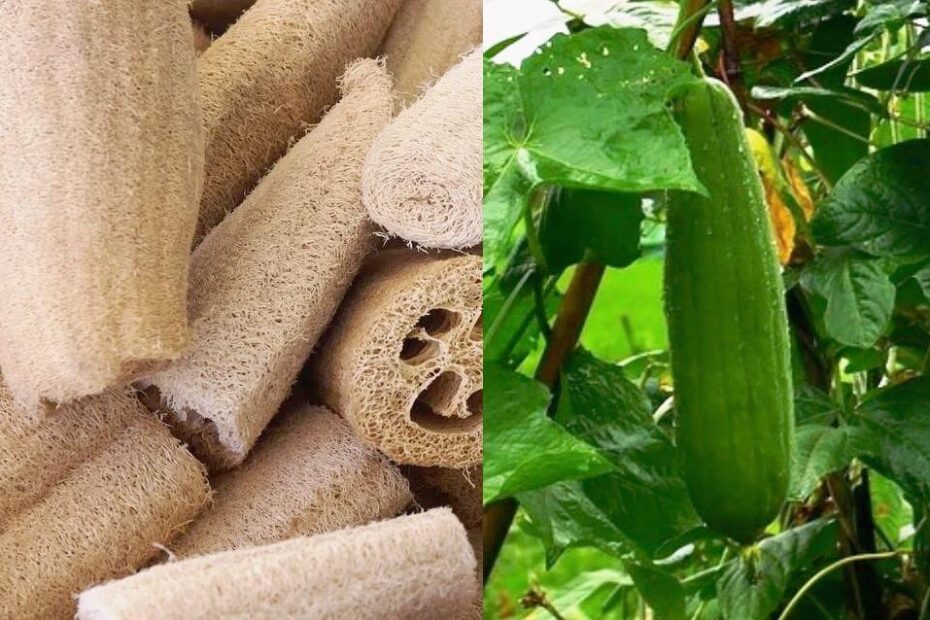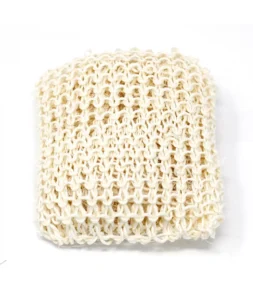Dishwashing sponges. Natural replacements.
Plastic dishwashing sponges
Dishwashing sponges can be dangerous both for our health and the environment. They are mostly made of polyester, the same material as plastic, non-reusable bottles. This material is no-biodegradable and decomposes for almost 500 years.
During usage, dishwashing sponges release microplastics into the environment.
Microplastic is particularly dangerous for organisms occupying seas and oceans.
It’s consumed by animals in this habitat and moves up the food chain. In a study
conducted on a chosen group of European citizens, microplastics were found in
their organisms. It entered the gastrointestinal tracts of the study participants along
with food.

Sponges can also be dangerous for our health. According to research, dishwashing sponges contain millions of microorganisms (source: Nature). Their moist environment promotes the development of bacteria, inter alia: salmonella, e.cola, staphylococcus, or even those causing pneumonia and meningitis. Sponges dry slowly and accumulate remnants of food, an environment like this is ideal for bacteria development. Unfortunately, disinfecting sponges in and microwave oven doesn’t kill all
microbes. There can be more bacteria on old, dirty sponges than in a toilet bowl. If we want to keep sponges in relative cleanness, we have to dry them after every use or we should replace them at least once a week. Unfortunately, with such frequent replacements, we will be producing vast amounts of unnecessary plastic.

Environmentally friendly dishwashing
sponges
On the market, there’s a considerable amount of very interesting products which we can replace colorful, plastic sponges. Organic sponges should meet a few requirements:
- It should be made from natural raw materials
- Should not contain chemical dyes
- Should be durable
- Should be compostable or biodegradable
Types of organic sponges
Cellulosome sponges
They are made of natural cellulose fibers. Sometimes cotton is added to cellulose. Cellulose sponges absorb water very well. In the dry state, they are hypoallergenic. They can be washed at a temperature of 95 degrees Celsius. They are safe for the environment, as they are biodegradable.

Sponges made from hemp, linen, and
cotton string
One of the best replacements for plastic sponges is sponges made of natural cords. They can be knitted by hand or bought ready. They are durable (the most durable are hemp sponges) and completely safe. After use, they can be thrown into the compost. Sponges from the string will cope with heavily soiled dishes. Dishwashers made of hemp string have antibacterial and antifungal properties. They can be washed at high temperatures and used with various detergents. They dry much faster than plastic sponges. If we decide to make it by hand, we can give them the shape of a pocket in which we will be able to put soap. This will facilitate the distribution of detergent.

Loofah sponges
An ecological and interesting option, because you can grow them yourself in your garden or on the balcony. Loofah (luffa, trukwa, sponge) is an annual plant from the pumpkin family. It comes from Africa and Asia. It grows just like our popular pumpkin. It reaches up to 2 meters in height and has beautiful yellow flowers. At the end of summer, it produces cucumber-like fruits. It is from them that natural loofah sponges are made. If you want to grow a sponge yourself, you should stock up on the seeds of this plant and sow it at the turn of March and April into pots. To the right place move in the second half of May, after the frosts subside. With a little patience, at the end of summer, fruits will appear, from which, after cleaning, we will get a loofah sponge. If our sponge wears out, just throw it
into the compost and it will decompose in about 30 days.

Sisal agave fiber sponges (sisal sponges)
The popular sisal is obtained from agave leaves. It is a natural and biodegradable product. For the production of sisal, older plants are used, with large and long leaves. The leaves are cut from the bottom while protecting the lower shoots. Thanks to this, the plant can be used throughout the growing season. Sisal is also used for the production of strings. They are suitable, like hemp or linen, for making washcloths. Sisal sponges come in many forms.


Coconut fiber sponges
Sponges made from coconut fiber are also a good choice. They’re very durable. They can be washed in a dishwasher or washing machine. They can endure very high temperatures. They are made of pressed coconut fibers, which makes themcompletely safe, biodegradable and compostable.

Walnut shells
Some producents offer sponges, in which a layer of walnut shells covers one side. The shells are suitable for scrubbing strong dirt off.
Sea sponges, konjac sponges
Natural sea sponges and konjac sponges are available on the market. They are very delicate and recommended mainly for body care. For washing dishes, they wouldn’t do as well as the sponges described above.
How to care for natural sponges?
Most ecological sponges are suitable for being washed in high temperatures. They can be put into the washing machine or the dishwasher. To disinfect them, a few droplets of natural oils, for example, tea tree, citrus, or lavender oil, should be added to the wash. After the wash, the sponges need to be well-wrung and hung in an airy place.




